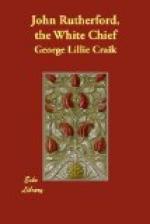The term “tattoo” is not known in New Zealand, the name given to the marks, which are elsewhere so called, being in this country “Moko,” or, as it has been more generally written, from a habit which the natives seem to have of prefixing the sound “a” to many of their words, “Amoco."[U]
The description which Rutherford gives of the process agrees entirely with what has been stated by other observers; although it certainly has been generally understood that, in no case, was the whole operation undergone at once, as it would, however, appear to have been in his. Both Cruise and Marsden expressly state, that, according to their information, it always required several months, and sometimes several years, to tattoo a chief perfectly; owing to the necessity for one part of the face or body being allowed to heal before commencing the decoration of another. Perhaps, however, this prolongation of the process may only be necessary when the moko is of a more intricate pattern, or extends over a larger portion of the person, than that which Rutherford received; or, in his peculiar circumstances, it may have been determined that he should have his powers of endurance put to still harder proof than a native would have been required to submit to in undergoing the same ceremony.
The portrait of Rutherford accurately represents the tattooing on his body. Cruise asserts that the tattooing in New Zealand is renewed occasionally, as the lines become fainter by time, to the latest period of life; and that one of the chiefs who returned home in the “Dromedary” was re-tattooed soon after his arrival.
From Rutherford’s account, and he is corroborated as to that point by the other authorities, it will be perceived that the operation of tattooing is one of a still more severe and sanguinary description in New Zealand than it would seem to be in any of the other islands of the South Sea; for it is performed here, not merely by means of a sort of fine comb, which merely pricks the skin and draws from it a little serum slightly tinged with blood, but also by an instrument of the nature of a chisel, which at every application makes an incision into the flesh, and causes the blood to start forth in gushes. This chisel is sometimes nearly a quarter of an inch broad, although, for the more minute parts of the figure, a smaller instrument is used.




